In recent years, indoor gardening has surged in popularity as people seek to infuse their living spaces with nature’s touch. Among the plethora of options available, the best hanging plants stand out for their versatility and aesthetic appeal. They offer a unique way to bring nature indoors, perfect for those with limited floor space or a desire to elevate their interior décor. Below, we introduce 15 outstanding hanging plants renowned for their ability to flourish indoors.
Best Hanging Plants
1. Spider Plant (Chlorophytum comosum)
Spider plants are renowned for their air-purifying qualities and easy care requirements, making them an excellent choice for indoor hanging baskets. With their long, arching leaves that cascade gracefully over the edges of the container, spider plants add a touch of elegance to any room while improving air quality.
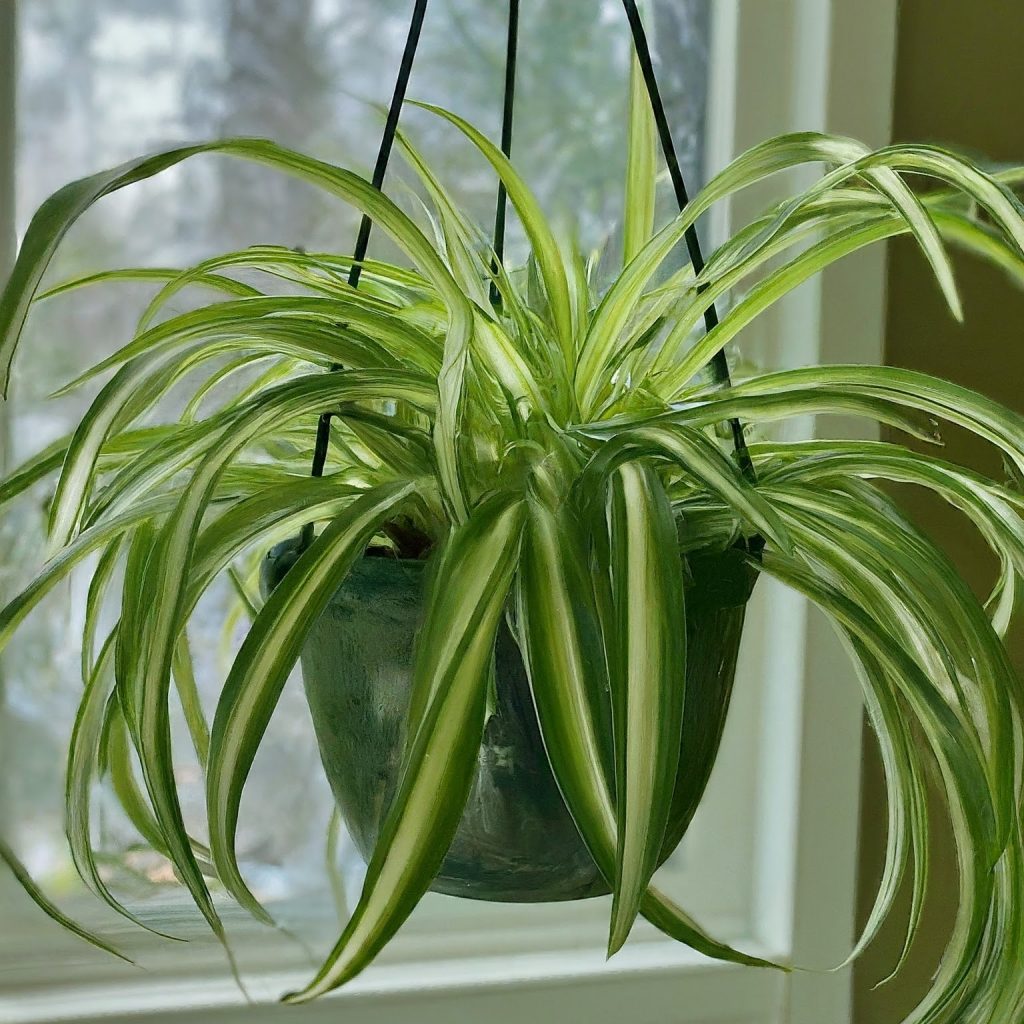
2. String of Pearls (Senecio rowleyanus)
Featuring trailing stems adorned with spherical, bead-like leaves, the string of pearls plant is a unique and visually striking addition to any indoor space. Its distinctive appearance and low-maintenance nature make it a favorite among indoor gardeners.
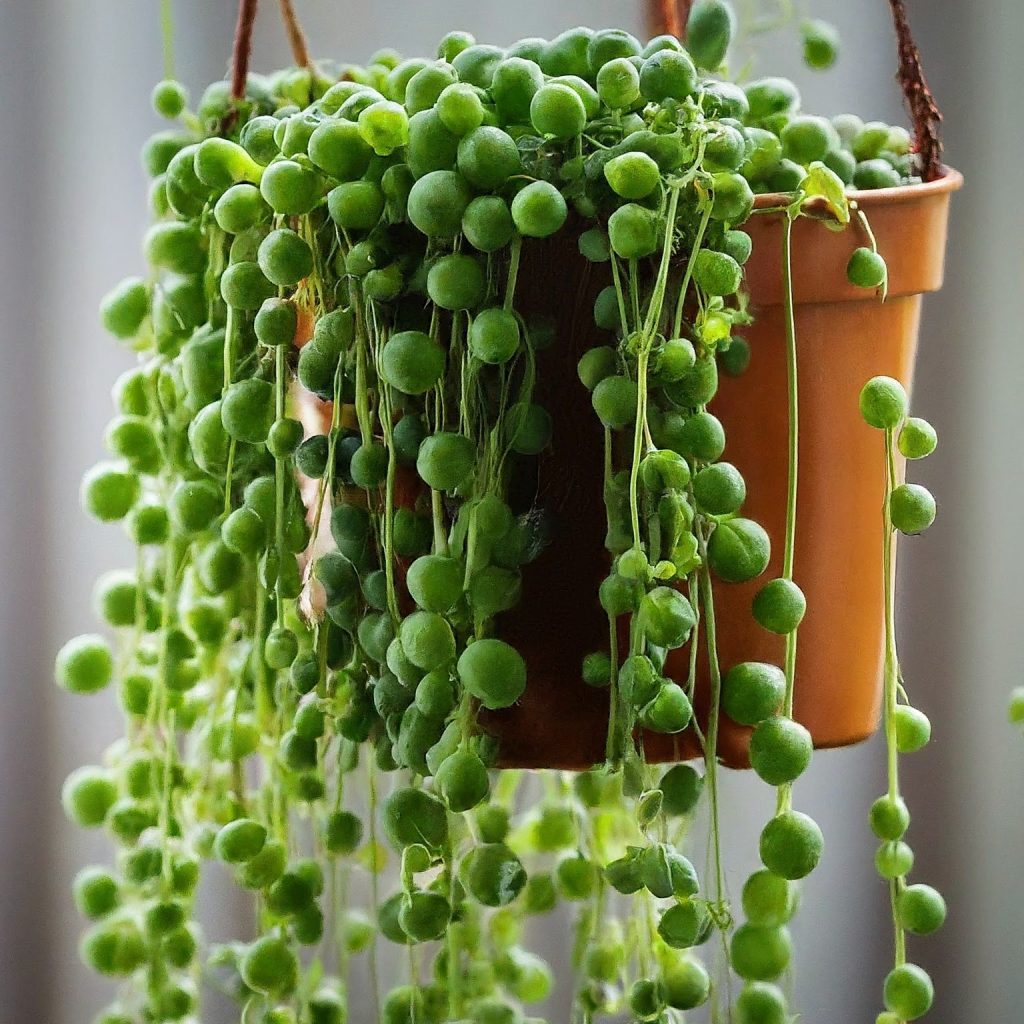
3. Boston Fern (Nephrolepis exaltata)
Known for its lush, feathery fronds, the Boston fern is a classic choice for hanging baskets. It thrives in humid environments, making it well-suited for bathrooms or kitchens where moisture levels tend to be higher.
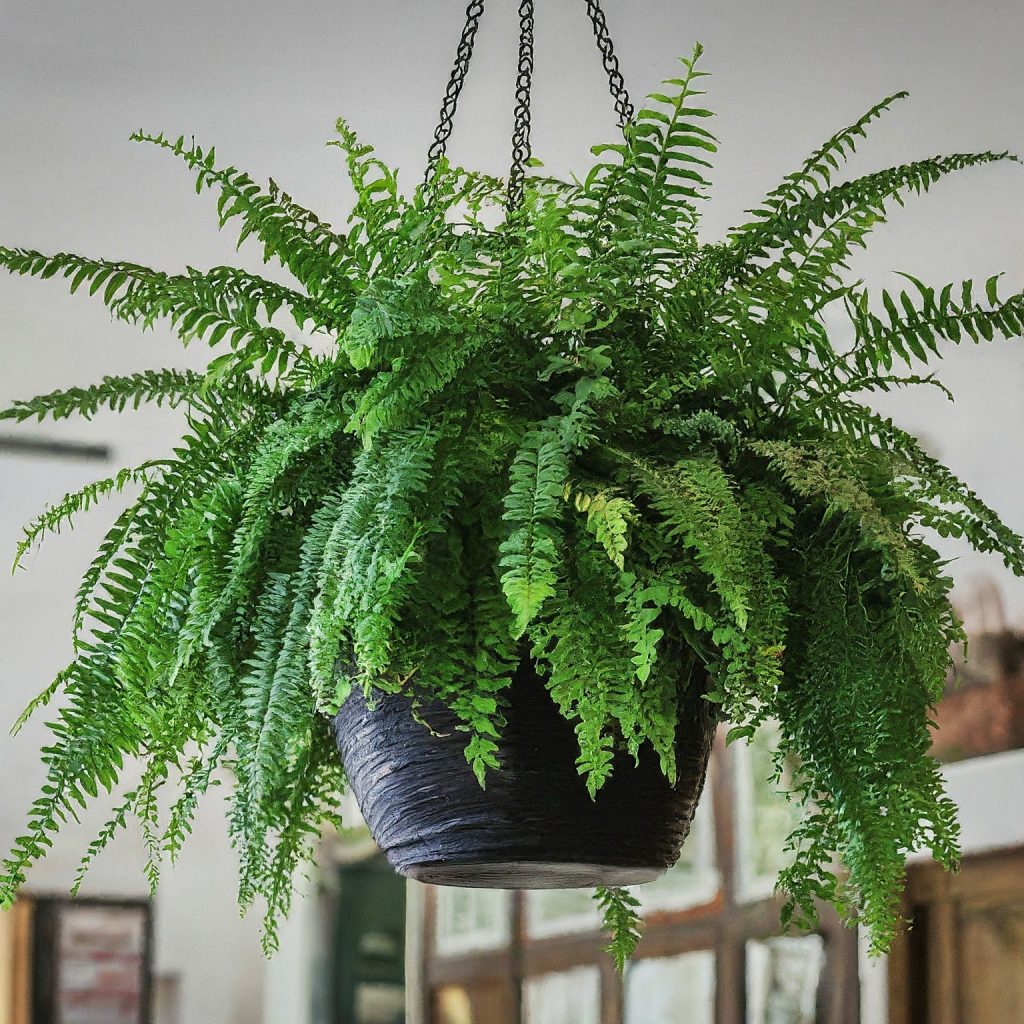
4. Pothos (Epipremnum aureum)
Pothos is a versatile and resilient plant that is perfect for beginners. Its heart-shaped leaves and trailing vines make it an attractive choice for hanging baskets, and it can tolerate a wide range of light conditions.
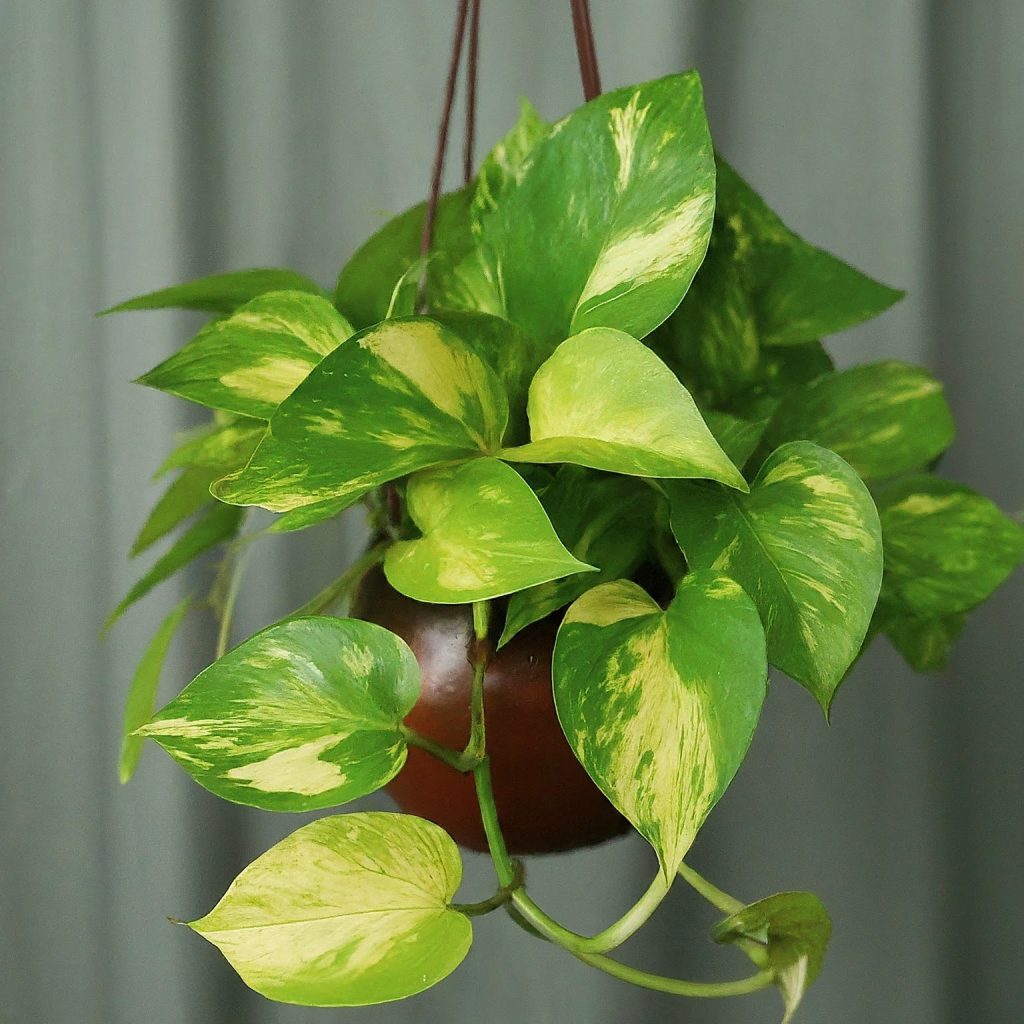
5. English Ivy (Hedera helix)
English ivy is a timeless favorite for indoor hanging baskets, thanks to its cascading vines and glossy, deep-green leaves. It adds a touch of elegance and sophistication to any room while helping to purify the air.
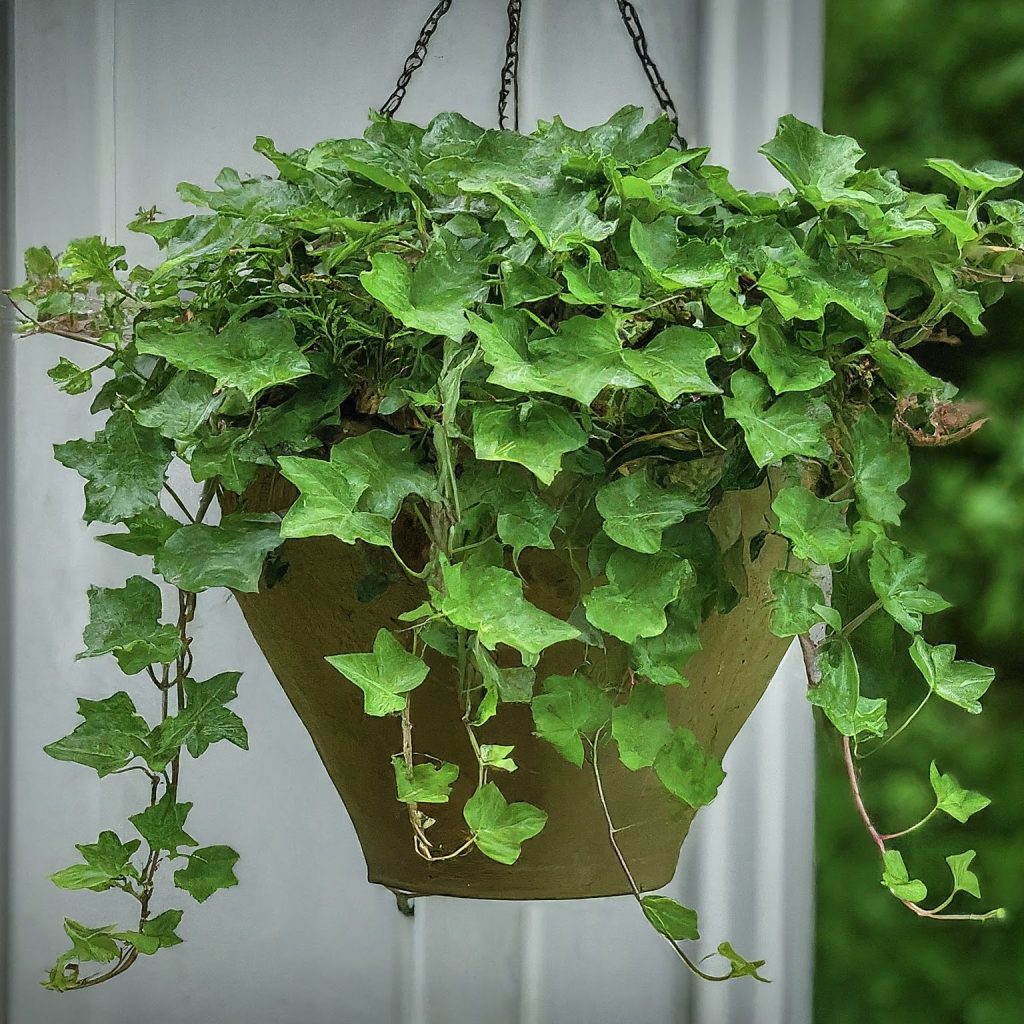
6. String of Hearts (Ceropegia woodii)
Also known as the sweetheart vine, the string of hearts plant features delicate, heart-shaped leaves that trail gracefully from hanging baskets. Its charming appearance and low maintenance requirements make it a popular choice for indoor gardening enthusiasts.
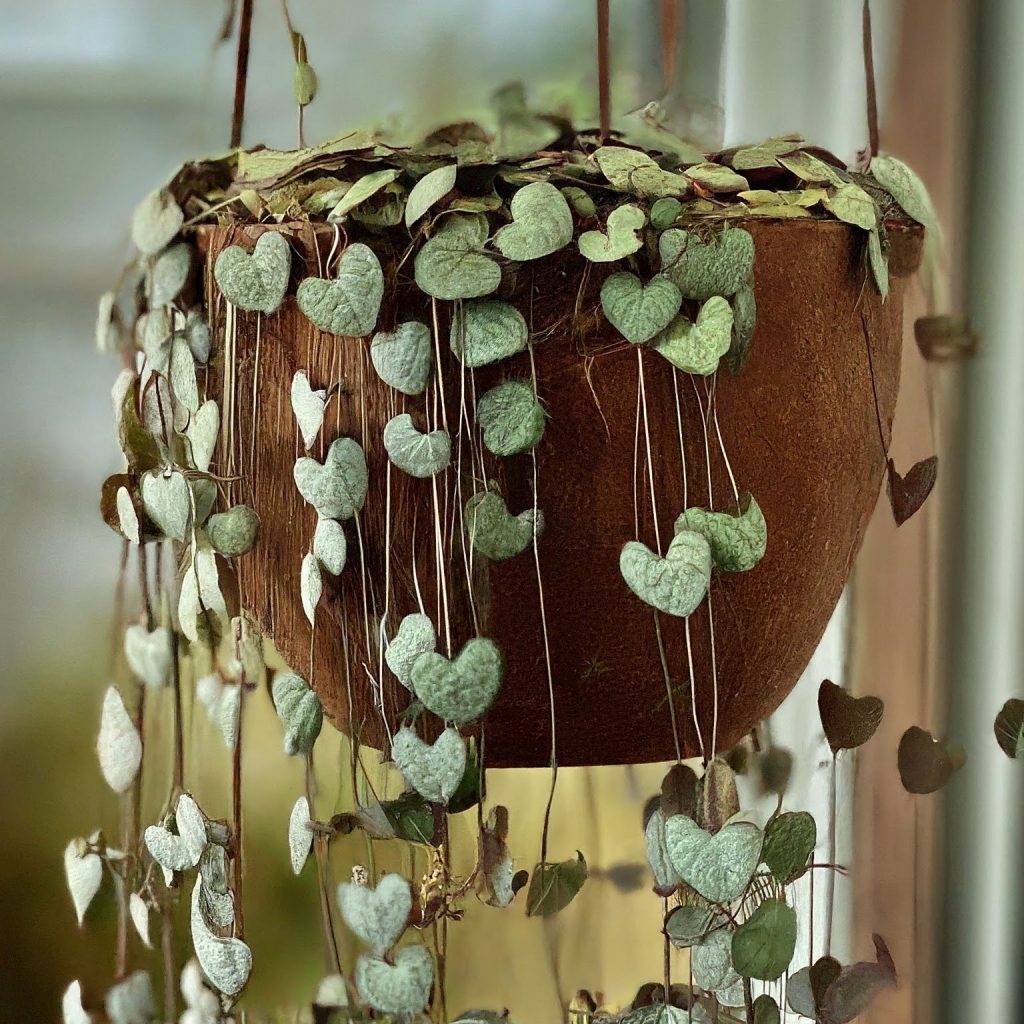
7. Philodendron (Philodendron hederaceum)
Philodendrons are beloved for their attractive foliage and easy care nature, making them ideal for hanging baskets. With their trailing vines and heart-shaped leaves, philodendrons add a touch of tropical beauty to any indoor space.

8. Burro’s Tail (Sedum morganianum)
The burro’s tail plant is a succulent with long, trailing stems covered in plump, teardrop-shaped leaves. Its unique appearance and low water requirements make it a great choice for hanging baskets in sunny locations.
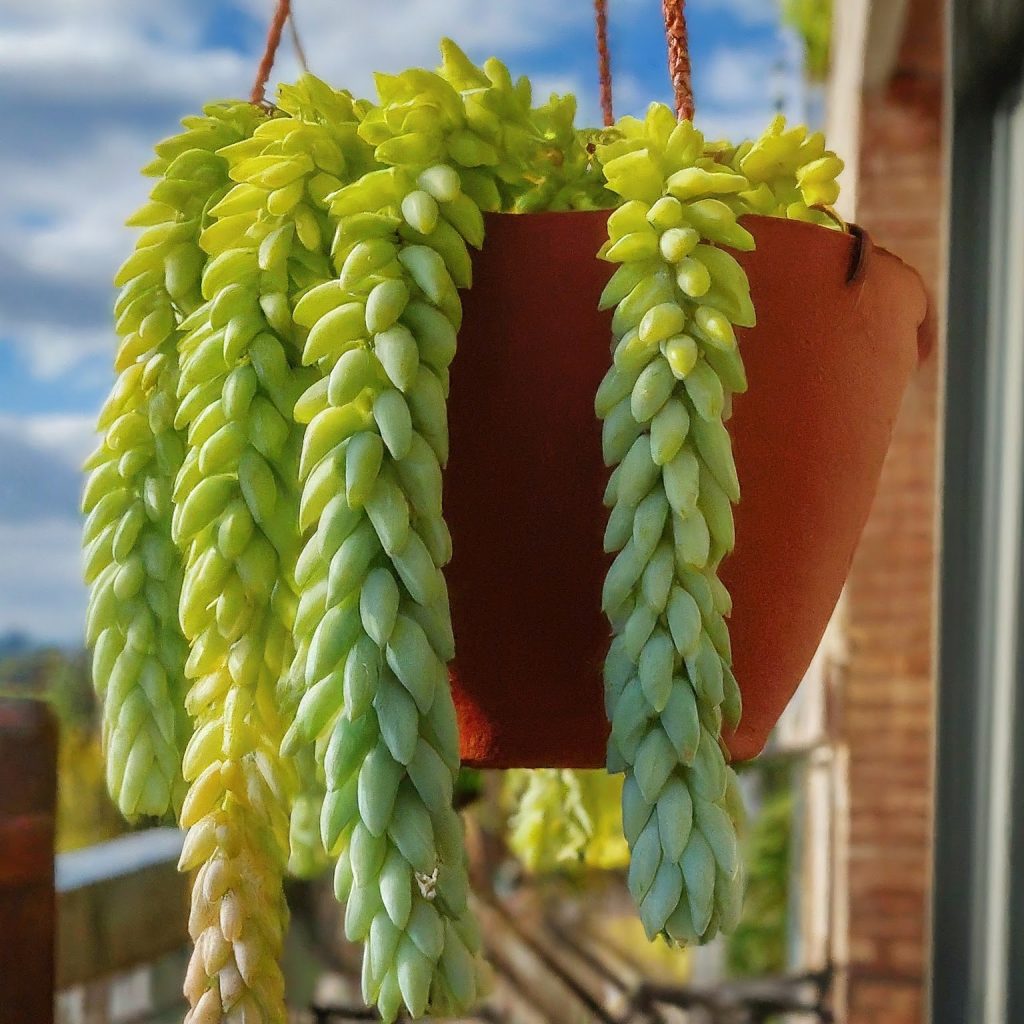
9. Lipstick Plant (Aeschynanthus radicans)
With its vibrant red flowers that resemble lipstick tubes, the lipstick plant is sure to make a statement in any indoor space. It thrives in bright, indirect light and adds a pop of color to hanging baskets.
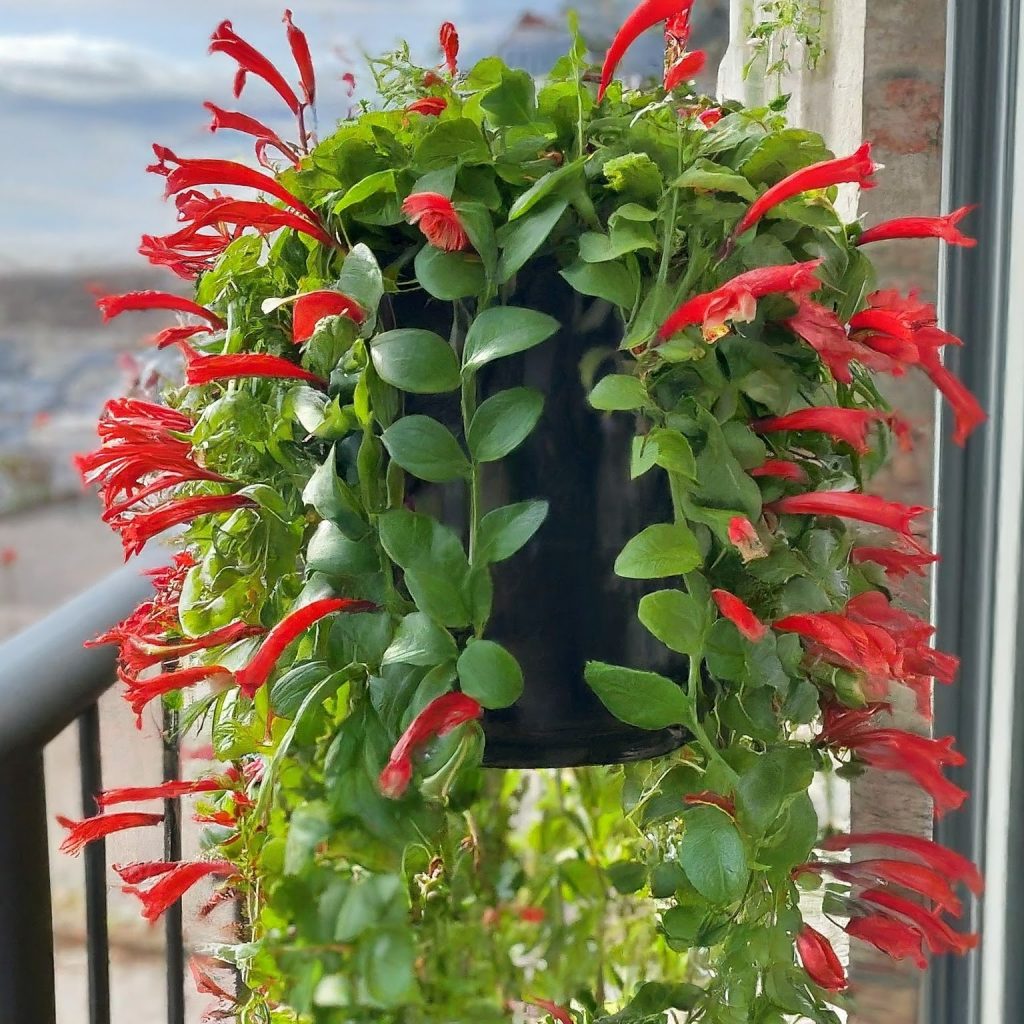
10. Air Plants (Tillandsia spp.)
Air plants are unique in that they don’t require soil to grow, making them incredibly versatile for hanging displays. Simply attach them to a hanging structure or place them in a decorative container, and mist them regularly to keep them hydrated.

11. Wandering Jew (Tradescantia zebrina)
The wandering jew plant features colorful, striped foliage that trails beautifully from hanging baskets, adding a vibrant touch to any room. It thrives in bright, indirect light and requires minimal maintenance.
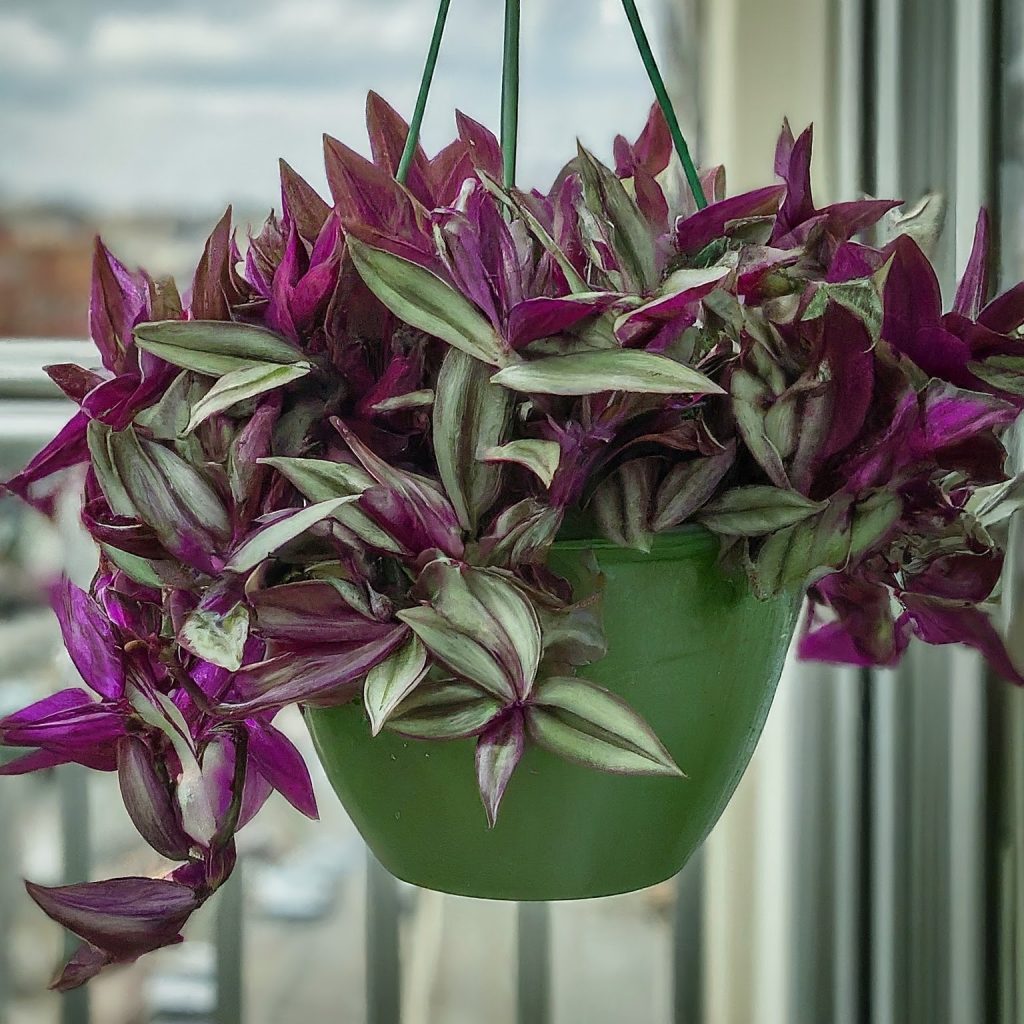
12. Nerve Plant (Fittonia spp.)
Nerve plants are known for their strikingly patterned leaves and low-light tolerance, making them perfect for hanging baskets in shady areas. Their vibrant foliage adds a pop of color and visual interest to any indoor space.
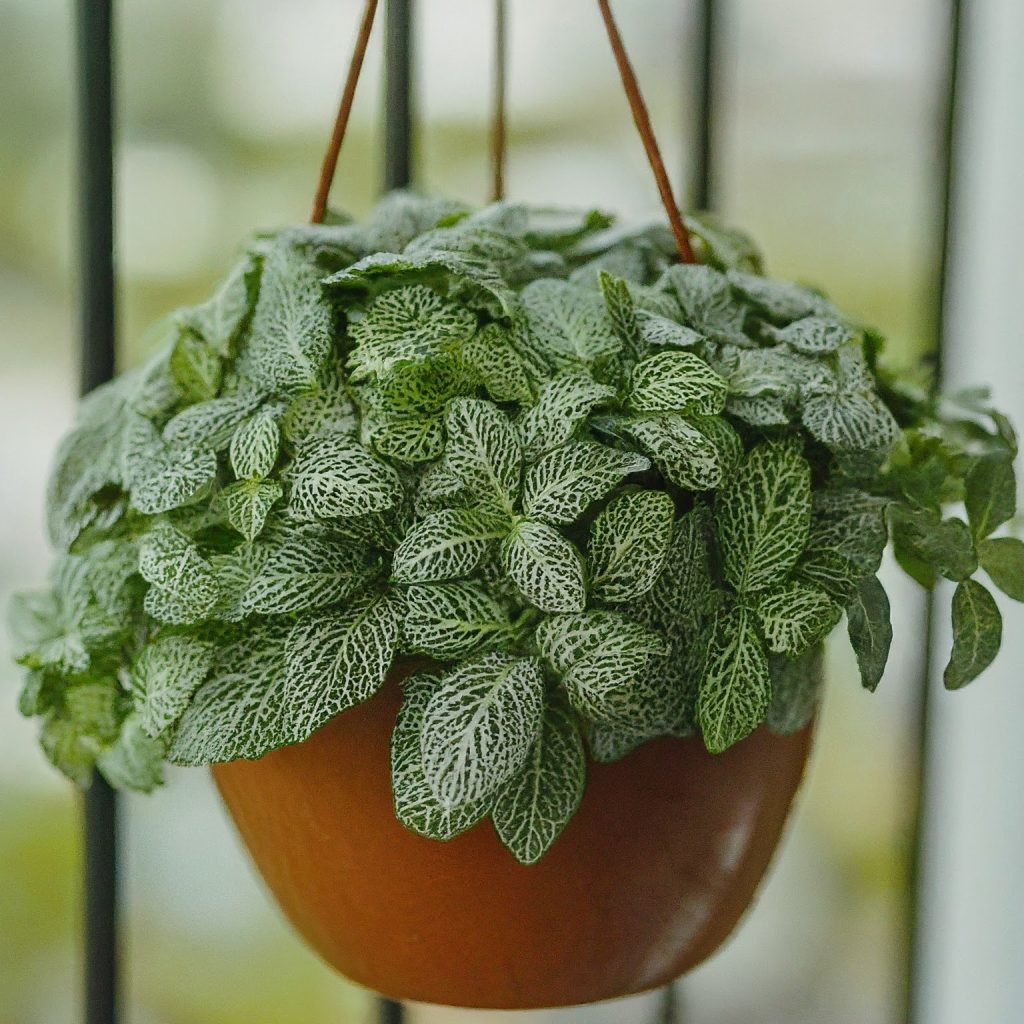
13. Fuchsia (Fuchsia spp.)
Fuchsias are prized for their pendulous flowers, which come in a variety of colors and add a touch of elegance to hanging baskets. With their unique appearance and long-lasting blooms, fuchsias are sure to delight indoor gardeners.
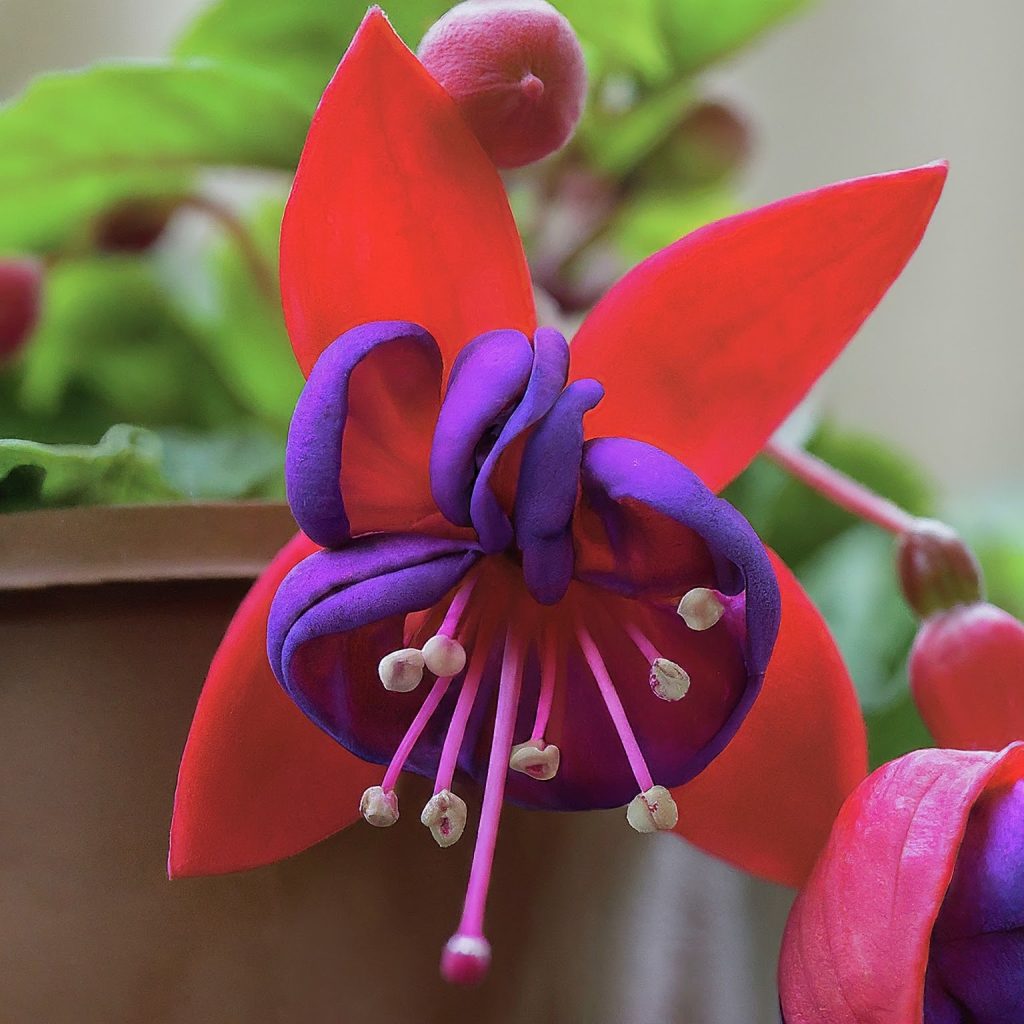
14. Lip Fern (Cheilanthes lanosa)
The lip fern is a delicate fern with lacy, trailing fronds that add a soft and airy appearance to hanging baskets. It thrives in humid environments and makes an excellent choice for bathrooms or kitchens.
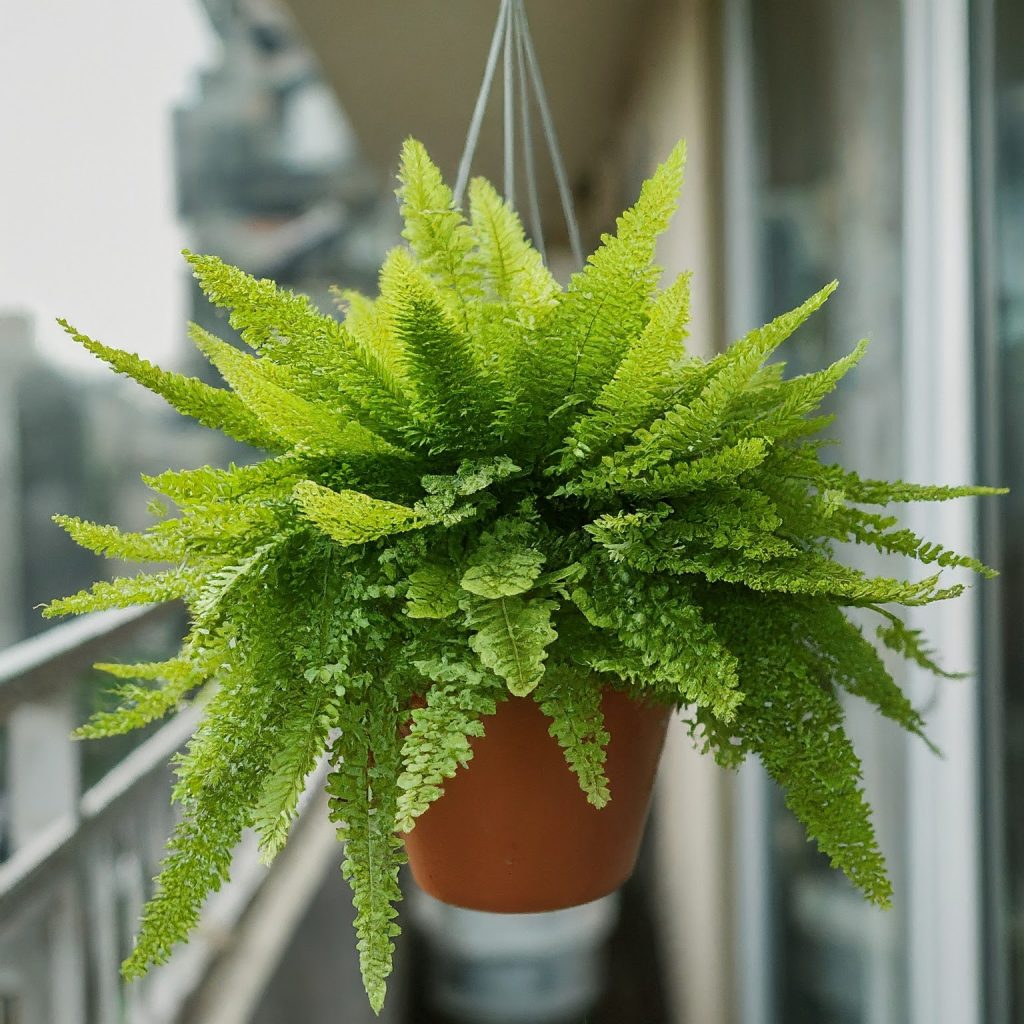
15. Baby’s Tears (Soleirolia soleirolii)
Also known as mind-your-own-business, baby’s tears form a dense mat of tiny leaves that cascade gracefully from hanging baskets. Their delicate appearance and low-maintenance nature make them a popular choice for indoor gardening enthusiasts.
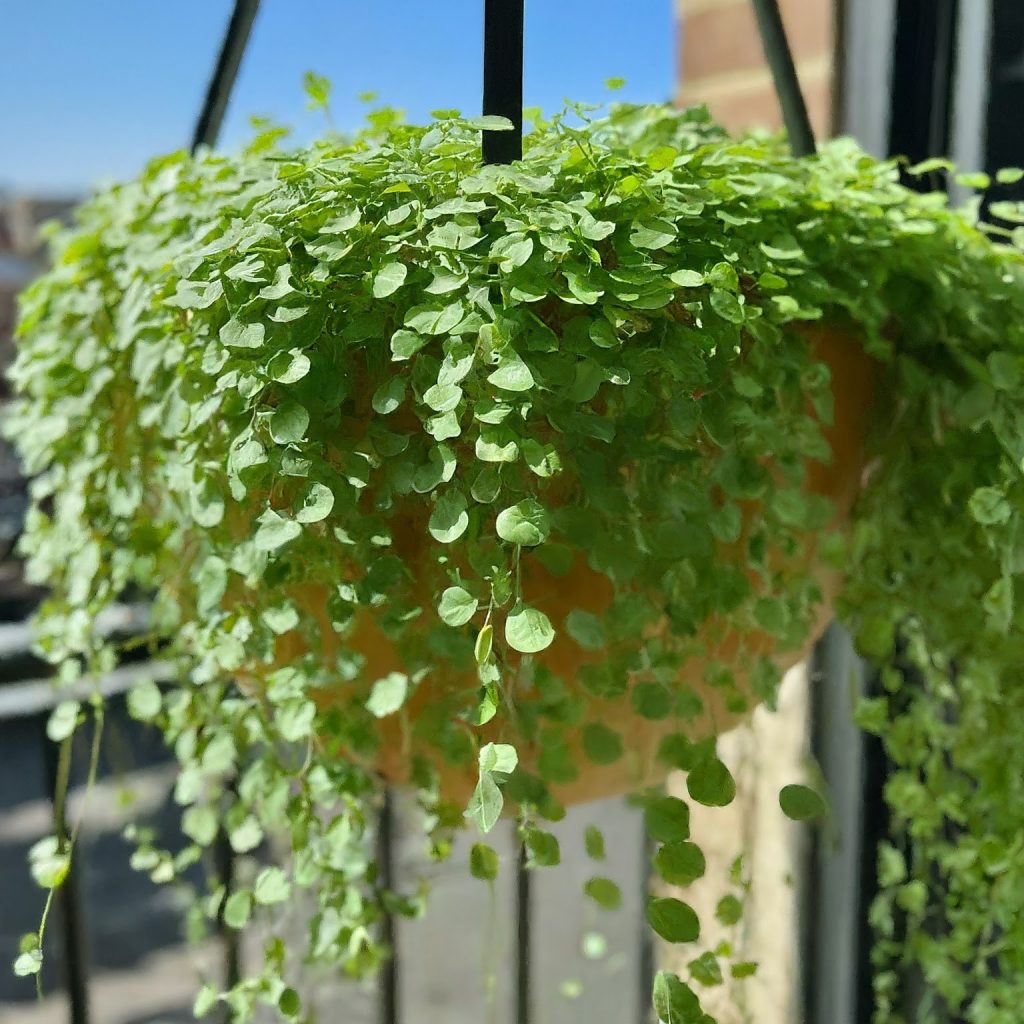
In summary, integrating hanging plants into your indoor environment offers a splendid means of infusing natural beauty into your living space and elevating your interior design. Whether your taste leans towards lush ferns, cascading vines, or vibrant blossoms, there exists a hanging plant perfectly tailored to your aesthetic preferences. With diligent care and attention, these top 15 hanging plants will flourish, enriching your indoor ambiance with enduring delight and charm.
Bonus: Plant Care Tips for Hanging Beauties
While we’ve covered the specifics of each plant, here are some general care tips to keep your hanging beauties thriving:
Potting: It is important to choose a pot with drainage holes to avoid waterlogging. Select a pot size that matches the plant’s growth habit, and for fast-growing plants like pothos, repot them every 1–2 years in a slightly larger container.
Fertilizing: During the growing season (spring and summer), fertilize your hanging plants once a month with a diluted balanced fertilizer according to the package instructions. Avoid over-fertilizing, which can damage the roots.
Cleaning: Regularly wipe down the leaves of your hanging plants with a damp cloth to remove dust and prevent pest infestation.
Pests and Diseases: Keep an eye out for common houseplant pests like mealybugs and spider mites. Address infestations promptly with insecticidal soap or neem oil solutions.
Seasonal Care: Some plants may require adjustments in care routine during different seasons. For example, many plants may need less water in the winter months when they experience slower growth.
Rotation: Hanging plants can develop uneven growth due to leaning towards the light source. Regularly rotate your plants a quarter turn every week to encourage bushier growth on all sides.
Special Considerations: Certain plants, like philodendrons, are toxic to pets and children. If you have curious critters in your home, research the toxicity of your chosen plants before bringing them indoors.
By incorporating these bonus tips into your plant care routine, you can ensure your hanging plants flourish and add a touch of vibrant life to your indoor oasis for years to come.
